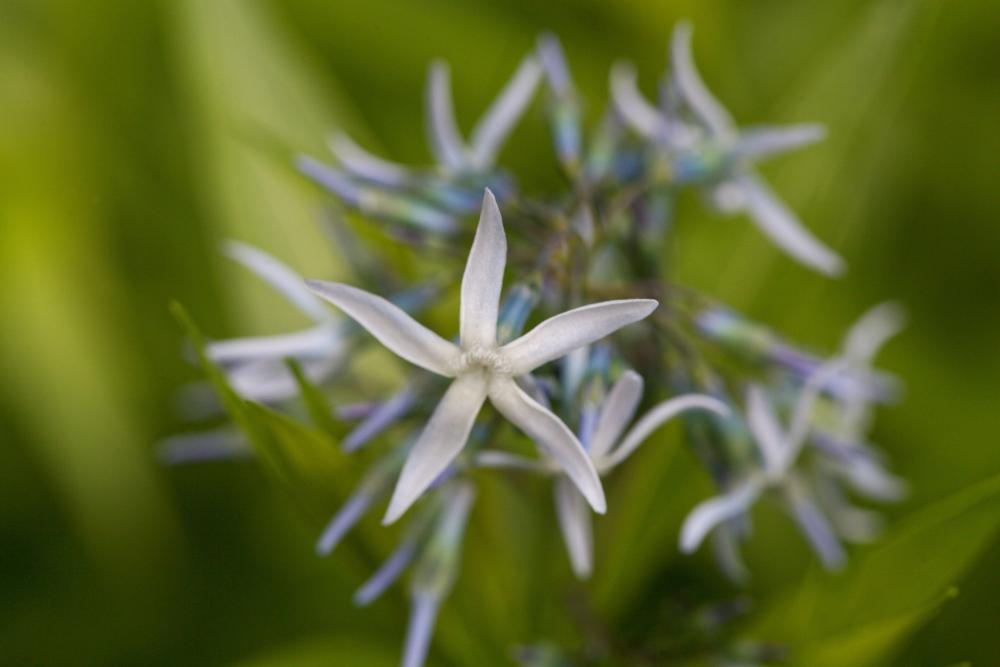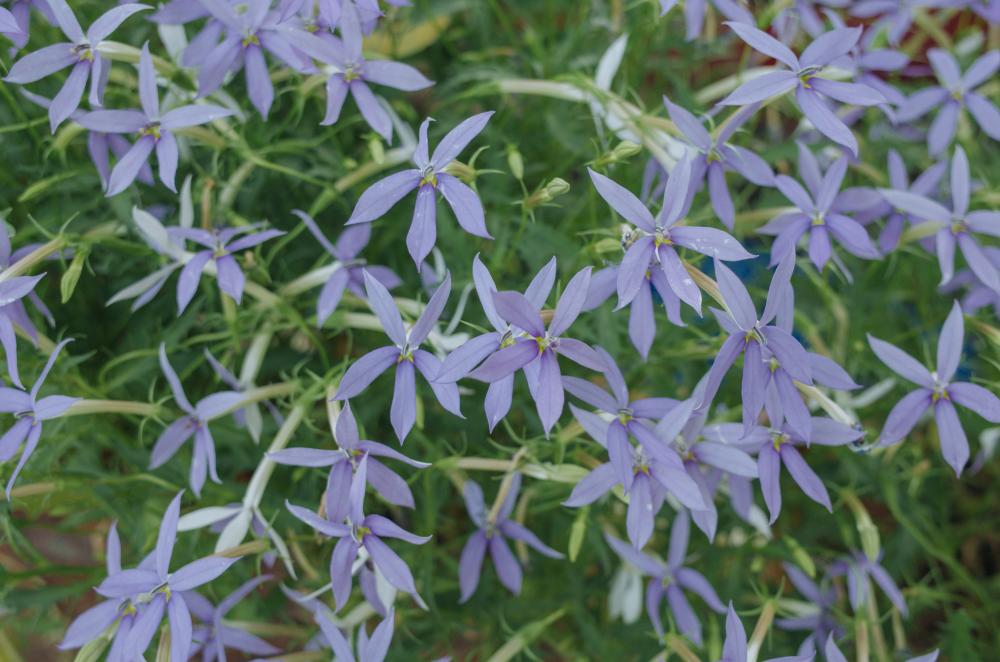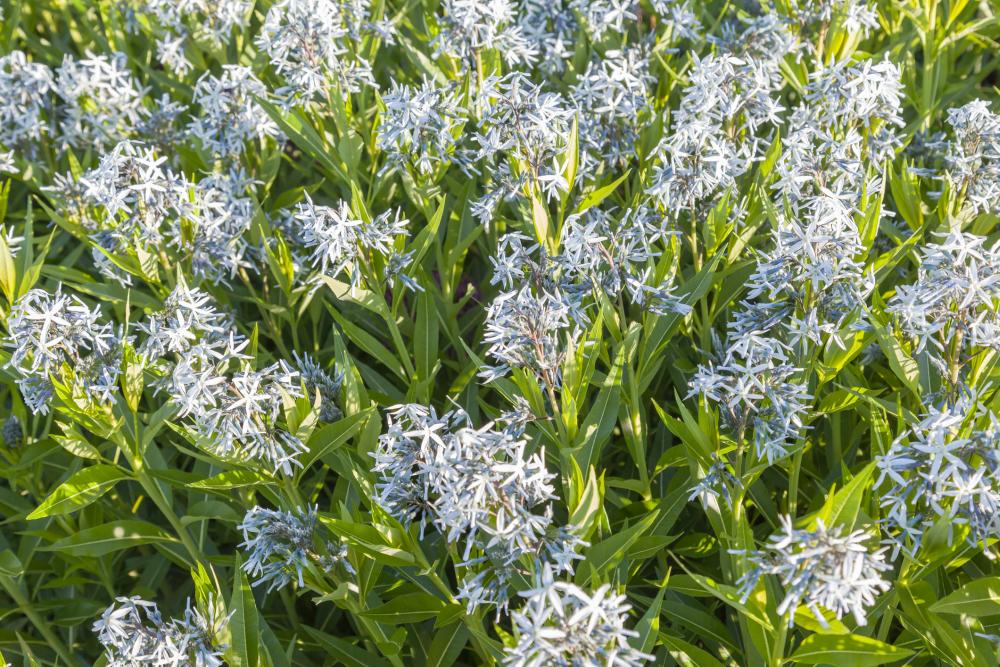Amsonia Care: How To Grow And Care For Bluestar Plants
If you’re a fan of herbaceous perennials, then amsonia would be at the top of your list of plants to grow. Known for its attractive foliage in the fall and long-lasting blooms, the plant grows naturally in North America. In other words, it’s a highly ornamental plant that won’t have trouble growing in your garden with a little prodding on your side.
You can plant the amsonia as an accent plant since it doesn’t take up much space, and its showy foliage complements many companion floral plants. When cut, you can prolong its vase-life by sealing the cut at the end of the stalk in boiling water. Not to mention that pollinators come flocking to the flowers of the Amsonia and, in the process, pollinate other veggies and fruit plants you have growing in the garden. Read on to find out more about how to grow and care for Amsonia plants.
Amsonia at a Glance
Amsonia is a member of the dogbane family that grows in North America, the Mediterranean, and East Asia. It was first identified in 1788, although some species were discovered as recently as 1943. Since it grows in many US states and was used by Native Americans in traditional medicine, the plant goes by many names. These include bluestar, willowleaf, woodland bluestar, and blue dogbane, among others.
As a native of North America, amsonia grows well in different hardiness zones from 3 to 11. Some varieties can grow to 3 feet tall and the same in diameter. However, the growing conditions and fertility of the soil play a major role in how large or small the perennial plant will be.
Despite the clump-like appearance of the herbaceous plant, it maintains a tidy shape, especially with regular pruning and light trimming. Known for its shrub structure, the leaves are long and slender, with a pointy end just like a lance. When they get their fill of the sun during the spring and summer, the leaves get all the vibrant fall colors from gold to bright red and orange.
But it’s the flowers that make the amsonia stand out as an ornamental plant. The star-shaped flowers start blooming in the early spring and stay open until the late summer.
The flowers are mostly blue and grow in clusters. They have a nice fragrance, but you need to get close to the flowers to smell it.
Amsonia Varieties
Although it was first officially discovered in the 18th century, Native Americans have been using amsonia for ages as a medical plant. Admittedly, some of the varieties that were used in traditional medicine are different from those grown in gardens, still, you have over 18 species and counting to choose from. Here are some Amsonia varieties to consider in your garden.
- Amsonia hubrichtii: A relatively new addition to the amsonia family, this variety was first discovered in 1943. It grows mainly in Arkansas and Oklahoma and has slender leaves that look like green needles. The flowers grow in clusters on top of long and leafless stalks.
- Amsonia kearneyana: A native of Pima County, Arizona, this variety is sometimes called Kearney’s Bluestar. It’s been classified as an endangered plant since 1989 due to flash floods and habitat destruction. The plant grows to about 6 feet and has hairy stems that form large clumps. The leaves are similarly long and thin, averaging about 4 inches long and less than an inch wide. The seeds have a low germination rate.
- Amsonia orientalis: This variety grows mainly in the Mediterranean, especially in Greece and Turkey. It’s the only amsonia species that is native to Europe. Overharvesting and loss of habitat have also put the ornamental plant on the brink of extinction. Known as European Bluestar, it has antimicrobial properties that made it valuable for treating wounds.
- Amsonia tomentosa: This species is native to North American and grows naturally in Texas, Nevada, Southern California, and Chihuahua, Mexico. It sometimes goes by the names gray amsonia and wooly bluestar. The woody plant averages 20 inches tall and can be covered with wool-like fabrics or has smooth stems depending on the variety.
How to Grow Amsonia
Amsonia is easy to grow since it’s native to North America. However, if you want to start it from seeds, make sure that you choose a variety that has a high germination success rate. Species such as Kearney’s Bluestar (Amsonia kearneyana) don’t germinate well, so you’ll need to buy saplings from the nursery and transplant them to the garden. Here’s how to grow amsonia in easy steps.
- If you have access to a mature amsonia plant, then starting a new plant by division is the easiest and fastest option.
- Water the plant about 24 hours before you cut the stem.
- Use a sterilized blade to cut about 6 inches of a healthy stem. Make sure the stem has a few leaves growing on it.
- Remove the leaves from the cutting and keep only 4 leaves near the top.
- Prepare the soil in a sunny spot in your garden by turning up the top 10 inches. Mix in plenty of organic materials.
- Dip the end of the cutting in rooting hormone powder to accelerate the root development.
- Dig a hole about 2 inches deep in the soil, and after shaking off the excess powder, plant the cutting in the hole.
- Fill the hole with loose soil and firm it to keep the cutting standing upright.
- Water the soil to get it moist and help it settle.
- Don’t let the soil dry out as the cutting develops roots and the first growths emerge.
- The leaves on the cutting might fall. That’s normal and will soon be replaced with new leaves.
Amsonia Care
For all its beauty and long-lasting blooms, amsonia, surprisingly, requires little maintenance work. It can get by with little nutrients in the soil and will tolerate the onslaught of the hot summer sun as well as the occasional cold spell in the spring and fall. However, adequate watering, feeding, and the occasional pruning will keep this delightful perennial in good shape and health. Also, keep in mind that Bluestar is toxic for both humans and pets. So keep the plant away from the reach of children and animals in your house.
Soil
The soil needs to be prepared before you plant amsonia. This usually involved turning up the top 8 inches and mixing in a generous portion of organic materials or aged manure. You can use aged manure in the garden. But if you’re growing it in a container, you should use compost since it’s mostly odorless. Both sandy and clayish soil need to be amended to get the soil’s texture as close to loamy as possible. Also, adjust the pH levels to get a reading between 6.2 and 7.0. The plant thrives in slightly acidic soil as opposed to neutral or alkaline.
Light
Light as a growing condition can make or break the amsonia plant. On the one hand, this herbaceous perennial needs full sun to thrive and bloom. But that depends on the zone you live in and the type of summer you get. If the summer usually brings sweltering heat, then keeping the plant exposed to the sunlight all hours of the day will damage it. Some partial shade in the afternoon is recommended to prevent wilting stems and drooping leaves.
On the other hand, sun deprivation can stop the plant’s growth outright, and it will not bloom. It also becomes prone to diseases and infections.
Water
Watering the plants is often the trickiest part of their care and maintenance. Amsonia watering, however, is rather straightforward. If you’re growing it in the garden, then provide the plants with one inch of water every week. If you get rainfall during the growing season, then that should count as part of the one-inch weekly quota. Cut back on watering as the plant goes dormant in the late fall and until the next spring.
Potted plants need more watering but less water quota. Keep your watering shallow, and don’t keep irrigating until the excess water flows out of the drainage holes. Moist soil is the key to the success of this perennial. It has a very low tolerance to drought and dry soil.
Temperature and Humidity
For a plant that grows well in zones 3 to 11, you might expect both the temperature and humidity around the plant to give it few if any issues. But in reality, amsonia prefers hot and humid conditions. During the growing seasons in the spring and summer, the temperature needs to be above 60 degrees F. for the perennial plant to grow its lush foliage and bear its fragrant blooms. For indoor plants where they’re less likely to struggle with strong wind, ideal temperatures should not drop below 55 degrees F.
High humidity is also crucial for the thriving of the herbaceous perennial. You could use a humidifier to create a cozy and humid spot around the plant. For outdoor plants, you can mist them twice a week or more if your summers are dry.
Fertilizer
Feeding the amsonia should be done with a few considerations in mind. First and foremost, this is a flowering plant with blooms that last for months. So nitrogen feeding should be applied in the early spring, but once the flower buds emerge, you should switch to phosphorus-high fertilizers.
Another consideration has to do with fast-release fertilizers. Chemical fertilizers trigger a fast growth spurt that puts the plant under stress. You should use organic compost and liquid fertilizers instead. Cut the liquid fertilizer with water to bring it down to half strength and apply it once every couple of weeks.
Pruning
When it comes to amsonia, you will be doing less pruning and more grooming. The stems of the plant, supple as they are, often bend under the weight of the star-shaped flowers and even more so once the seed pods develop. So you have a few options to keep the perennial plant upright.
- Cut the plant back by about one-third when the flowers open to lighten the weight on the slender stems.
- Place a stake with a hoop next to the plant to prevent the stems from drooping. Be careful when installing the stake and avoid damaging the roots.
- Bolster the laden plant with sturdy plants on both sides. They will act as support without having to install a stake.
- While deadheading is not needed in this case, cutting some of the flowers and arranging them in a vase can lighten the load of the Bluestar.
Pests and Diseases
You’ll be undoubtedly relieved to know that amsonia is naturally immune to most diseases. The only two health issues the plant is prone to are Mycosphaerella leaf spot and rust. The first is caused by pathogens that infect the plant when it’s stressed or struggling with drought, inadequate light, or poor nutrition. So ensuring that the plant is healthy and well-fed with slow-release nutrients will allow it to be more disease-resistant.
Rust is often the result of poor ventilation. Although the Bluestar thrives in high humidity, air circulation is crucial for preventing fungal spores from landing on the leaves and causing havoc with the foliage.


